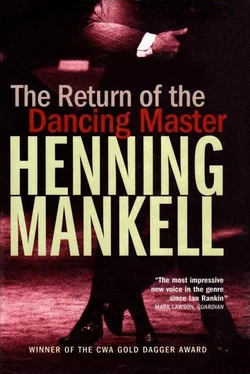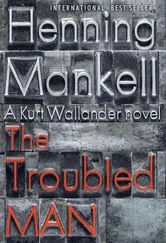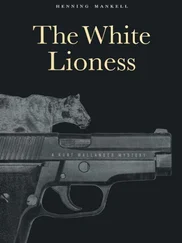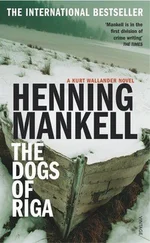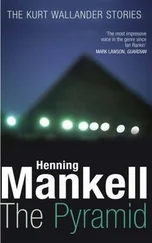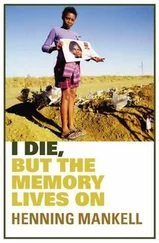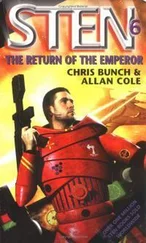After an hour or so of silent and steady work, Rundström summoned all the police officers to the house to go through the case so far. By then two more cars had arrived from Östersund with more equipment for the forensic team. Then the helicopter had returned and collected Andersson’s body. Later it would be taken by car from Östersund to the coroner’s office in Umeå.
Before the meeting started, Rundström had gone over to where Lindman was sitting in his car and asked him to join them. So far he hadn’t inquired how Lindman had been the one to discover Andersson’s body.
The officers huddled in the sizable kitchen. They were tired and cold. Larsson was leaning against a wall, pulling hairs out of one of his nostrils. Lindman thought he looked older than his forty-three years. His cheeks were sunken, his eyelids heavy. He sometimes gave the impression of not being with it, but Lindman thought it was more likely that his mind was working overtime. His concentration was directed inwards. Lindman supposed that Larsson was looking for the answer to the question every investigation leader asks himself over and over: what is it that we can’t see?
Rundström opened the meeting by talking about roadblocks. They had been set up on all the major access roads. Before the police had arrived in Särna, there had been a report of a car driving south at high speed, towards Idre. This was an important sighting. Rundström asked Johansson to talk to their colleagues in Dalarna.
Then he turned to Lindman. “I don’t know if everyone present knows who you are,” he said. “We have a colleague from Borås here who used to work with Herbert Molin. I think it will be best if you explain the circumstances in which you came to discover Abraham Andersson’s body.”
Lindman described what had happened when he’d driven to Dunkärret from Sveg. Rundström asked him a few questions. What he wanted to know was the timing of various points. Lindman had been experienced enough and had the presence of mind to check his watch both when he arrived at the house and when he discovered the body. The meeting was short. The forensic team was anxious to get back to work because the weather forecast threatened sleet later in the day. Lindman went outside with Larsson.
“There’s something that doesn’t fit,” Larsson said. “You have suggested that the reason for Molin’s death may well be found in his past. That sounded reasonable to me. But where do we stand now? Andersson has never been a police officer. He and Molin didn’t know each other until they happened to settle in the same remote spot. That sinks your theory, I would have thought.”
“It has to be checked out, though, don’t you think? Molin and Andersson may have had something in common that we don’t yet know about.”
Larsson shook his head. “Of course we shall check into it. But I don’t buy it even so.” He burst out laughing. “Police officers shouldn’t believe anything, I know. But we do. From the very first moment we arrive at the scene of a crime we start forming possible conclusions. We make nets without knowing how big the mesh should be. Or what fish we are hoping to catch, not even what kind of water we’re going to put them in. The sea or a mountain lake? A river or a tarn?”
Lindman had some difficulty following Larsson’s imagery, but it sounded convincing.
One of the dog handlers emerged from the forest. Lindman could see from the state of the dog that it had really been stretching itself.
“Nothing,” said the handler. “And besides, I think Stamp’s ill.”
“What’s the matter with him?”
“He brought up his food. He’s probably caught a virus.”
Lindman turned to look at Andersson’s Norwegian elkhound: it was standing motionless on its lead, staring at the place where the voices of the forensic officers could be heard.
“What’s going on here in the forest?” Larsson said. “I don’t like it. It reminds me of a shadow moving in the dusk. You don’t know if its real or imagined.”
“What kind of a shadow?”
“The kind we’re not used to up here. Molin was the victim of a well-planned attack. Andersson was executed. I don’t get it.”
Their conversation was interrupted by Johansson. “We can forget about the car at Särna. It was a man in a hurry to get his wife to the maternity hospital.”
Larsson muttered something inaudible in reply. Johansson went back to the house.
“What do you think?” Larsson said. “What really happened?”
“I’d use the same word you did. An execution. Why take a man into the forest, tie him to a tree, and then shoot him?”
“If it happened in that order. But of course, that’s what I’ve been wondering,” Larsson said. “Why go to that trouble? There’s also a similarity with the murder of Molin. Why go to the trouble of planting those bloodstained tango steps on the floor?” He provided the answer himself. “A message. But to whom? We’ve talked about this before. The murderer sends a greeting. To us or to somebody else? And why does he do it? Or why do they do it? We don’t know if there’s more than one murderer.” Larsson looked up at the overcast sky. “And are we dealing with a madman? And is this the last? Or will there be more?”
They went back to the house. Rundström was on the phone. The forensic unit had started searching Andersson’s house. Rundström put the phone down and pointed at Lindman.
“We should have a word,” he said. “Let’s go outside.”
They went to the back of the house. The clouds scuttling across the sky were getting darker.
“How long are you thinking of staying?” Rundström said.
“I had intended on leaving today. Now I suppose it will have to be tomorrow.”
Rundström looked at him quizzically. “I have a feeling there’s something you haven’t told me. Am I right?”
Lindman shook his head.
“There wasn’t anything between you and Molin that you need to tell us about?”
“Nothing.”
Rundström kicked at a stone.
“It’s probably best for you to let us look after the investigation now. Best for you to keep out of it.”
“I haven’t the slightest intention of getting involved in your work.”
Lindman could feel himself getting annoyed. Rundström wrapped his words in a sort of casual friendliness. Lindman was irritated because he didn’t speak plainly.
“Let’s leave it at that, then,” Rundström said. “It’s good that you found him, of course. So that he didn’t need to be tied up there until someone else found him.”
Rundström walked off. Lindman noticed Larsson standing in a window, watching him. Lindman beckoned to him.
“You’re leaving, then?”
“Tomorrow.”
“I’ll get in touch with you later today.”
“Call me at the hotel. My cell’s not working.”
Lindman drove off. After a very few kilometers he felt sleepy. He turned onto a forestry track, turned off the engine, and reclined the seat.
When he woke up, he was enclosed by silent, white walls. It had started snowing while he was asleep, and the car windows were already covered. He sat and held his breath. Could this be what death is like? A white room with pale light filtering through the walls? He readjusted his seat and felt stiff all over. He’d had a dream, he knew that, but he couldn’t remember what it had been about. Something about Andersson’s dog, perhaps? Hadn’t it started to chew one of its own legs? He shuddered at the thought. Whatever it was he’d dreamed, he’d rather forget about it. He looked at his watch: 11:15. He’d been asleep for more than two hours. He opened the door and got out to urinate. The ground was white, but it had stopped snowing already. There was no movement in the trees. No wind. Nothing, he thought. If I stood still I’d soon turn into a tree.
Читать дальше
